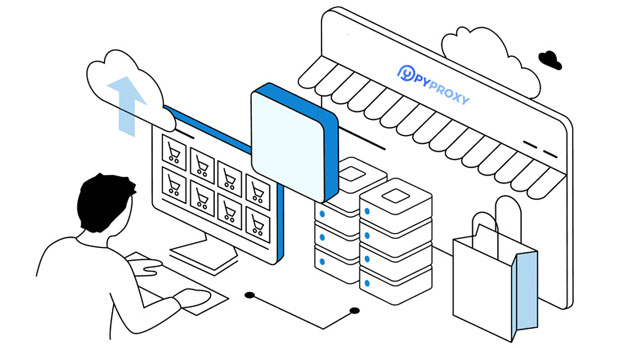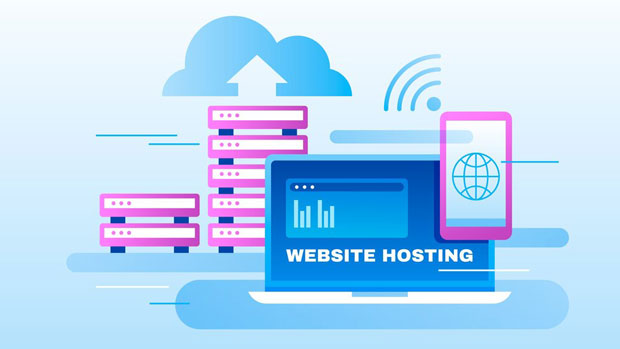When managing multiple accounts across various platforms, having a reliable proxy solution is essential to prevent blocks and ensure anonymity. Two of the most popular proxy services for this purpose are PYPROXY and Luminati (now known as Bright Data). Both services offer unique features that cater to businesses and individuals looking to scale operations while maintaining privacy. In this article, we will explore the key differences between these two proxy services, their strengths, and help you decide which is best suited for your multi-account management needs. 1. Overview of Proxy Services: PyProxy vs. LuminatiBefore diving deep into the differences, it's important to understand the nature of both proxy services. PyProxy is a tool designed primarily for high-performance, large-scale web scraping and multi-account management, offering users access to both residential and data center proxies. It allows you to manage a large number of accounts from different IP addresses, avoiding detection by websites and maintaining anonymity.On the other hand, Luminati (now Bright Data) is one of the industry leaders in the proxy market. It provides users with a massive network of proxies across various categories, including residential, data center, mobile, and even Wi-Fi-connected IPs. This vast range makes it a versatile choice for large enterprises or individuals who need complete flexibility when managing multiple accounts.2. Proxy Network Size and DiversityOne of the key factors in choosing a proxy provider is the size and diversity of the proxy network. Luminati has one of the largest proxy networks in the world, with millions of residential and mobile IP addresses spread across different countries. This allows users to select proxies from a wide range of locations, providing more flexibility and better chances of accessing geo-restricted content or maintaining multiple accounts without facing blocks.PyProxy, while not as vast as Luminati’s, offers a solid range of residential and data center proxies. While its proxy pool may not be as large, it is sufficient for many smaller businesses or individuals who do not require global proxy coverage. PyProxy’s main selling point is its simplicity and ease of use, making it an excellent choice for those who need quick, straightforward multi-account management.3. Performance and SpeedSpeed and performance are crucial when it comes to proxy services, especially when managing multiple accounts at once. Users expect minimal latency and high uptime, as any downtime can lead to account suspensions, delays in data collection, or errors in automated tasks.Luminati provides high-performance proxies with speeds that are optimized for large-scale operations. Their proxy infrastructure is robust, and their extensive network allows for better reliability and faster connection speeds. However, the sheer size of their network can sometimes lead to varying performance, especially during peak hours or high traffic times.In contrast, PyProxy offers a more streamlined experience. Its focus on high-performance proxies for multi-account management ensures a stable and fast connection. While it may not have the same extensive network as Luminati, PyProxy's smaller pool of proxies is typically optimized for quick, efficient usage, particularly for those who don’t need global distribution.4. Pricing and Cost EfficiencyWhen it comes to pricing, both PyProxy and Luminati (Bright Data) offer flexible plans, but the cost structure varies considerably. Luminati is known for being on the pricier side, which can be a significant consideration for smaller businesses or individuals. The cost is typically justified by the vast network, advanced features, and customer support. Luminati’s pricing is based on bandwidth usage and proxy selection, which can become expensive depending on the scale of your operations.PyProxy, however, tends to be more affordable for smaller-scale users. Its pricing is simpler and generally more budget-friendly, making it an attractive option for those with more limited needs. PyProxy offers competitive rates for residential and data center proxies, without the premium price tag of Luminati. However, if you need a large number of proxies for a global operation, Luminati’s higher cost might be justified by the greater scalability and flexibility.5. Features and CustomizationBoth PyProxy and Luminati offer unique features, but the level of customization and control each provides is different. Luminati excels in offering more advanced features, such as session control, geo-targeting, and the ability to rotate IPs automatically. This allows users to manage accounts with different IPs and locations seamlessly, making it ideal for those running complex operations or needing fine-tuned control over their proxy usage.PyProxy offers basic features that are more user-friendly for beginners and those managing smaller projects. It provides easy integration with popular web scraping tools and supports IP rotation, which is essential for avoiding detection while managing multiple accounts. However, it lacks some of the more advanced customization options available in Luminati, such as mobile IPs or the ability to use proxy chains.6. Security and AnonymitySecurity and anonymity are vital when dealing with sensitive data or multiple accounts. Both PyProxy and Luminati prioritize user privacy, but the level of security they provide may vary. Luminati has a strong reputation for security, offering encrypted connections and a variety of IP types, including mobile IPs, which make it harder to detect and block users.PyProxy, while secure, may not offer the same level of anonymity as Luminati due to its smaller pool of proxies. However, for most use cases, PyProxy provides sufficient privacy, especially if the focus is on managing a limited number of accounts.7. Ease of Use and Customer SupportUser experience is a crucial aspect when deciding between proxy providers. PyProxy has a straightforward interface and is easy to set up, making it an excellent option for beginners. The platform’s user-friendly design means you can quickly start managing your accounts without a steep learning curve.Luminati, while offering more advanced features, can be more complex to navigate. However, the platform compensates for this with excellent customer support and documentation. Users can access detailed guides and troubleshooting resources, ensuring they have the support they need to make the most of the service.Conclusion: Which Proxy Service is Right for You?Choosing between PyProxy and Luminati ultimately depends on your specific needs and budget. If you’re managing a small to medium number of accounts and need an affordable, easy-to-use solution, PyProxy may be the better option for you. It offers solid performance, reliable proxies, and straightforward integration at a reasonable price.However, if you’re operating at a large scale, need advanced features, or require global coverage with flexible proxy options, Luminati (Bright Data) is likely the better choice. Despite the higher cost, the robustness, speed, and features it offers make it ideal for businesses that need reliable, scalable proxy solutions for multi-account management.
Sep 15, 2025



































































